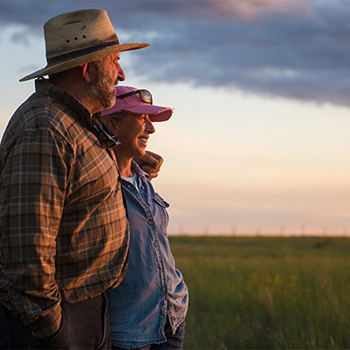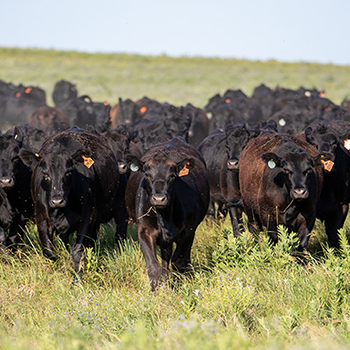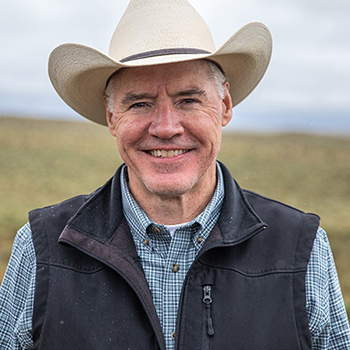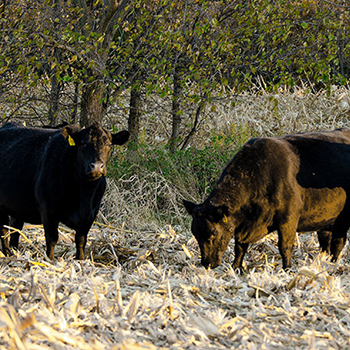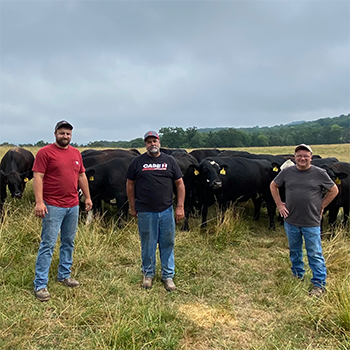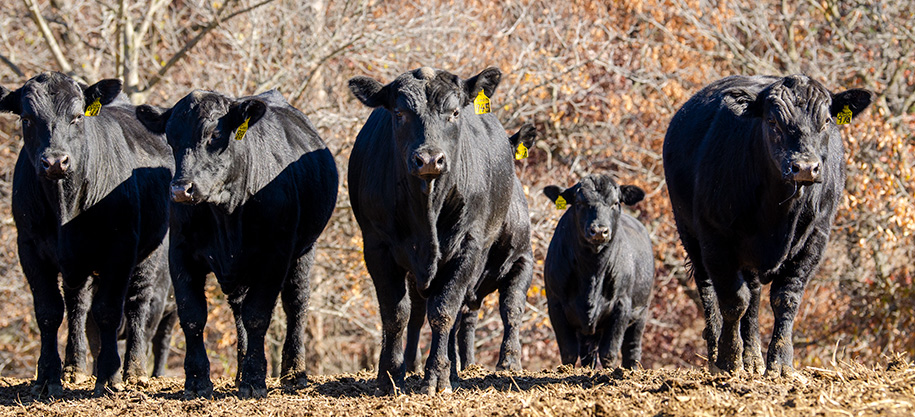
Aiming for Excellence
Targeting the Brand™ helps identify quality herd sires.
by Lauren Mosher, Certified Angus Beef
With more data than ever on today’s sire prospects, bull customers expect progress. Decisions Angus breeders made long before the gavel drops provide confidence and deliver on those anticipations.
The use of the Targeting the Brand™ logo in sale books helps both commercial cattlemen and seedstock producers advance their herds and orient them toward the Certified Angus Beef® (CAB®) brand. To earn the logo, registered Angus cattle must have a minimum 0.65 marbling (Marb) expected progeny difference (EPD) and a +55 grid dollar value index ($G). This makes it easy to identify bulls with added carcass value that could potentially add more dollars to your bottom line.
Missouri Angus breeder Josh Worthington has used Targeting the Brand since it launched in 2017. It’s a free and easy tool for his customers to quickly pick out Angus cattle that meet certain carcass quality goals.
“Our program’s built on the same metrics as what Targeting the Brand drives,” he says.
Last year 71 bulls, or 97%, of those in the Worthington Angus sale qualified.
Across the United States in the fall 2021 and spring 2022 sale seasons, more than 180 sales used the logo on 6,719 bulls, up from 5,872 a year earlier.
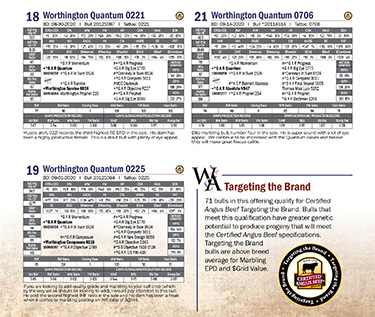
More than just a marketing tool for seedstock producers, use of the logo ensures commercial customers they’re choosing bulls more likely to meet goals at the feedyard and packing plant. |
Those results show in the growing CAB acceptance rate, currently at 36% of black-hided cattle and aiming for 50%.
More than just a marketing tool for seedstock producers, use of the logo ensures commercial customers they’re choosing bulls more likely to meet goals at the feedyard and packing plant.
“This provides comfort to prospective buyers who are looking to purchase calves that will hit a high-end grid premium,” Worthington says. “They have confidence when they know their set of feeder calves are sired by bulls that meet the specs for Targeting the Brand and have the genetic potential to make Certified Angus Beef.”
Commercial cattlemen communicate the premium value by marketing Angus-sired feeder calves through AngusLinkSM. Enrolling them in the Genetic Merit Scorecard® (GMS) program conveys a genetic snapshot based on the herd’s breeding history by assigning scores for beef, feedlot and grid potential. Groups of calves can be marketed using the Targeting the Brand logo if they earn a grid score of 125+ and are sired by Angus bulls with a +0.65 marbling EPD or higher.
GMS scores range from 0 to 200, with 100 being the industry average. The higher the score, the greater the potential for any group of calves. This lets buyers consistently choose cattle that have documented information on how calves may gain and grade.
“In the feeder-calf world, we’re trying to capture value ahead of harvesting those calves,” Worthington says. “Anything we can do to bring in those cattle and differentiate them within the marketplace helps.”
With a primary responsibility of helping customers realize more value for better carcass genetics, he invests in opportunities for customers to better understand EPDs and their effects on carcass quality.
“We’re not here to just sell them a bull. We’re here to sell them a bull that meets their needs and then recoup the value of that investment in genetics,” Worthington says.
Bull buyers want all the information they can get to back up their decisions. Feeder-calf buyers feel the same need for confidence when they bid, he says.
“Targeting the Brand provides that security,” Worthington says. “And we are able to build greater trust with our customers.”
Editor’s note: Lauren Mosher is a communications intern for Certified Angus Beef.
